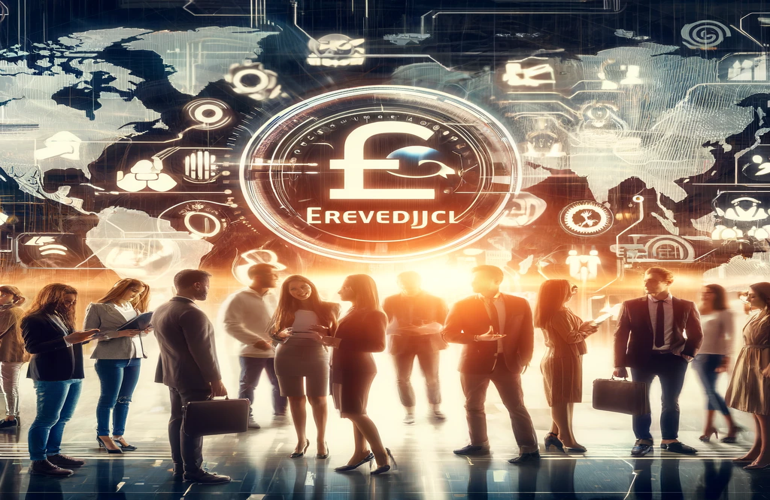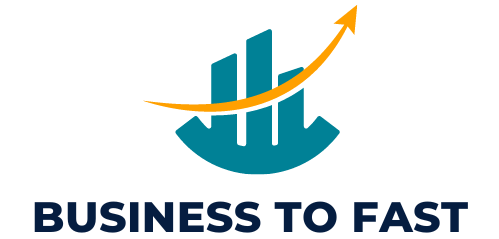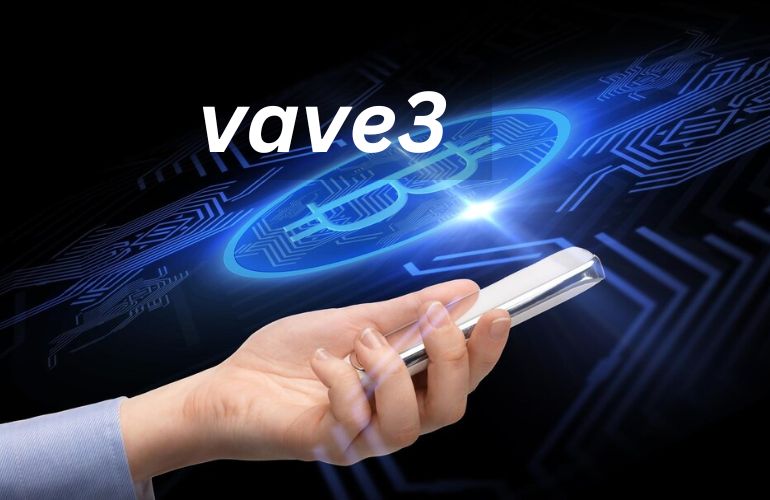
Translation bridges language gaps, fostering global communication. It connects cultures and promotes understanding across diverse communities. Over time, translation has evolved from manual efforts to advanced machine-driven processes. This transformation highlights the growing importance of accurate and efficient translation in our interconnected world.
Understanding the nuances and complexities involved in translation is crucial for businesses, healthcare, education, and more. As technology continues to advance, so does the potential for even more precise translations, making the role of translators more dynamic and essential than ever before.
The Significance of Translation
Cultural Sensitivity and Contextual Understanding
Translation is more than just converting words from one language to another; it’s about conveying the meaning and context behind those words. This requires a deep understanding of cultural nuances and sensitivities. A phrase that makes sense in one language might carry a completely different meaning in another if not translated with cultural context in mind. Effective translation respects these differences, ensuring that the intended message is accurately and respectfully communicated.
Cultural sensitivity in translation helps prevent misunderstandings and fosters mutual respect between different communities. It is crucial for translators to be aware of cultural norms, idiomatic expressions, and historical context to maintain the integrity of the original message.
Social Care and Cultural Nuances
Social care sectors, including healthcare, education, and social services, heavily rely on accurate translation to serve diverse populations. For instance, in healthcare, clear communication is essential for accurate diagnosis and treatment. Misunderstandings due to poor translation can lead to serious consequences. Translators must grasp the cultural nuances and medical terminology to ensure patients receive appropriate care.
Similarly, in education, translation allows students from different backgrounds to access the same quality of education. It helps in creating inclusive learning environments where everyone can participate and benefit from the educational material. Understanding cultural nuances in educational content ensures that no student is left behind due to language barriers.
Practical Examples of Cultural Sensitivity
To illustrate, consider the translation of marketing materials. A successful campaign in one country may fail in another if cultural differences are not taken into account. Humor, for instance, varies widely between cultures. What might be funny in one language could be offensive or nonsensical in another. Translators must adapt the content to resonate with the target audience while maintaining the original intent.
In legal documents, precision is paramount. Legal systems differ across countries, and a misinterpreted term could lead to significant legal implications. Translators working in this field need an in-depth understanding of both legal systems involved to ensure accuracy and prevent potential disputes.
The Translator’s Role in Bridging Cultures
Translators act as bridges between cultures, facilitating communication and understanding. They play a vital role in global interactions, from international business to diplomacy. Their work enables cross-cultural collaborations and helps build stronger, more inclusive communities.
By considering cultural sensitivity and nuances, translators not only convey words but also the essence of what those words represent. This level of understanding and respect for cultural differences is what makes translation a powerful tool in connecting the world.
The Translator’s Toolkit
Skills and Qualities of a Successful Translator
Successful translators possess a unique set of skills and qualities that enable them to bridge language barriers effectively. Mastery of at least two languages is a given, but this is just the beginning. Translators need excellent writing and comprehension skills in both their source and target languages to ensure that the translation is not only accurate but also reads naturally.

Attention to detail is crucial in this field. Even minor errors can significantly alter the meaning of a text. Patience and perseverance are also key, as translation can be a meticulous process, requiring the translator to work through complex and sometimes ambiguous material.
Cultural competence is another essential quality. Understanding the cultural context of both the source and target languages allows translators to convey meaning accurately and sensitively. This goes beyond linguistic knowledge, encompassing an understanding of cultural norms, idioms, and traditions.
Tools and Techniques Used by Translators
Modern translators have access to a wide array of tools and techniques that enhance their work. These tools range from traditional dictionaries and thesauruses to advanced software and online resources.
Computer-Assisted Translation (CAT) Tools: CAT tools, such as Trados and memoQ, help translators manage large projects more efficiently. These tools segment texts into smaller units and store translations in a database, making it easier to maintain consistency and speed up the translation process.
Machine Translation (MT): Machine translation tools like Google Translate or DeepL can provide quick translations for basic texts. While they are not a replacement for human translators, they can be useful for getting a general understanding of a text or for translating simple documents.
Terminology Management Systems: These systems allow translators to create and manage glossaries of terms specific to a particular field or project. This ensures that specialized terminology is used consistently throughout a translation.
Quality Assurance (QA) Tools: QA tools help identify errors and inconsistencies in translations. They can check for spelling and grammar mistakes, ensure consistent use of terminology, and even flag potential cultural issues.
Reference Materials: Access to a wide range of reference materials, including style guides, previous translations, and subject-specific literature, is vital for producing accurate and polished translations.
The Role of Technology in Translation
Technology has transformed the field of translation, making it more efficient and accessible. Machine translation, while not flawless, has improved significantly with advancements in artificial intelligence and neural networks. These technologies can analyze and learn from vast amounts of data, providing more accurate translations over time.
Cloud-based platforms have also revolutionized the industry by allowing translators to work from anywhere and collaborate with others in real-time. These platforms often include integrated tools for project management, terminology management, and quality assurance, streamlining the translation process.
However, despite these technological advancements, human translators remain essential. Machines can process language but lack the cultural understanding and nuance that human translators bring to their work. The combination of human expertise and advanced tools results in the most accurate and effective translations.
Continuous Learning and Professional Development
The field of translation is dynamic, with languages constantly evolving and new technologies emerging. Successful translators commit to continuous learning and professional development to stay current. This may involve attending workshops and conferences, participating in professional networks, and staying informed about industry trends and advancements.
Professional certification can also enhance a translator’s credentials and credibility. Organizations like the American Translators Association (ATA) and the Chartered Institute of Linguists (CIOL) offer certification programs that validate a translator’s skills and knowledge.
In summary, the translator’s toolkit is a blend of linguistic skills, cultural competence, and technological resources. This combination enables translators to produce accurate, effective, and culturally sensitive translations, making communication across languages possible and effective.
Technological Advances and the Future of Translation
Advancements in Translation Technology
Translation technology has advanced rapidly, bringing significant improvements to the field. One of the most notable developments is the rise of neural machine translation (NMT). NMT uses artificial neural networks to predict and translate text. This approach allows for more accurate and fluent translations compared to traditional statistical methods. NMT systems, such as Google Neural Machine Translation (GNMT) and DeepL, can handle complex sentences and idiomatic expressions better, making translations more natural and contextually appropriate.
Another significant advancement is the integration of artificial intelligence (AI) in translation tools. AI can analyze large volumes of text, learn from patterns, and improve translation quality over time. This self-learning capability is crucial for dealing with the nuances and complexities of different languages. AI-driven translation tools can also provide real-time translations, which is valuable in fast-paced environments like international business meetings or customer service interactions.
Cloud-based translation platforms have transformed the way translators work. These platforms allow for seamless collaboration among translation teams, regardless of location. Features such as shared glossaries, translation memories, and project management tools help maintain consistency and efficiency across large projects. Examples include platforms like Smartcat, MemoQ, and Trados Studio.
Mobile translation apps have also become more sophisticated. Apps like Microsoft Translator and iTranslate offer features such as voice recognition, camera translation, and offline capabilities, making them practical for everyday use and travel.
The Future of Translation with AI and Machine Learning
The future of translation is likely to be shaped by continuous advancements in AI and machine learning. These technologies are expected to enhance translation accuracy and efficiency further. Here are some key trends to watch:
- Enhanced Contextual Understanding: Future AI systems will likely improve their ability to understand and retain context over long passages of text. This will result in translations that are not only accurate on a sentence level but also coherent across entire documents.
- Personalization and Customization: AI will enable more personalized translation services. For example, systems could be tailored to recognize and apply a user’s preferred terminology and style. This is particularly beneficial for businesses that need to maintain a consistent brand voice across different languages.
- Integration with Other Technologies: Translation tools will become more integrated with other software and platforms. For instance, AI-powered translation could be built directly into customer relationship management (CRM) systems, content management systems (CMS), and other business applications, streamlining workflows and reducing the need for manual intervention.
- Real-Time Translation Improvements: Real-time translation capabilities will continue to advance, providing more accurate and fluid translations during live conversations and video calls. This will be instrumental in breaking down language barriers in international communication.
- Increased Language Support: As AI and machine learning models become more sophisticated, they will support a broader range of languages and dialects. This expansion will make translation services accessible to more people around the world.
- Ethical and Quality Standards: The industry will likely see the development of more rigorous ethical standards and quality control mechanisms for AI-driven translations. Ensuring that translations are not only accurate but also culturally sensitive and unbiased will be a priority.
Challenges and Opportunities
While technological advancements offer numerous benefits, they also present challenges. One major challenge is the potential for over-reliance on machine translation. Human oversight remains essential to ensure that translations are contextually appropriate and culturally sensitive. Additionally, ethical concerns around data privacy and the use of AI in translation need to be addressed.
Opportunities abound for translators who can leverage these technologies effectively. By combining human expertise with advanced tools, translators can offer higher-quality services and handle larger, more complex projects. Continuous professional development and staying abreast of technological trends will be key to thriving in this evolving field.
Challenges in the Translation Industry
Maintaining Accuracy and Consistency
Accuracy and consistency are foundational in translation. Translators must ensure that every word and phrase is translated correctly while maintaining the meaning and tone of the original text. This task can be complex, especially when dealing with technical or specialized content. Inconsistent terminology can lead to misunderstandings, so maintaining a consistent glossary and using translation memory tools are critical practices. These tools help keep track of previously translated terms and phrases, ensuring uniformity across different documents and projects.

Cultural Differences
Cultural differences pose significant challenges in translation. A phrase that is perfectly acceptable in one culture might be offensive or meaningless in another. Translators must have a deep understanding of the cultural context of both the source and target languages. This understanding helps them navigate idioms, jokes, and references that might not translate directly. Adapting content to fit cultural contexts without losing its original essence is a delicate balance that requires skill and experience.
Keeping Up with Technological Advancements
The rapid pace of technological advancements presents both opportunities and challenges for translators. New tools and software can greatly enhance efficiency and accuracy, but keeping up with these developments requires continuous learning and adaptation. Translators must stay informed about the latest trends and innovations in translation technology. This includes understanding how to use new tools effectively and being aware of their limitations. Balancing the use of technology with human insight is key to successful translation.
Managing Confidentiality and Security
Confidentiality and security are paramount in translation, especially when dealing with sensitive information. Translators often work with confidential documents, such as legal contracts, medical records, and proprietary business information. Ensuring the privacy and security of this data is a major responsibility. Translators must adhere to strict confidentiality agreements and use secure methods for storing and transmitting documents. Awareness of data protection laws and best practices in cybersecurity is essential to prevent breaches and protect client information.
Balancing Speed and Quality
Clients often demand quick turnaround times, but rushing the translation process can compromise quality. Translators must find a balance between speed and accuracy, ensuring that deadlines are met without sacrificing the quality of their work. This involves efficient time management, using technology to streamline workflows, and setting realistic expectations with clients about what can be achieved within given timeframes.
Handling Different Dialects and Variants
Languages often have multiple dialects and regional variants, which can complicate the translation process. A word or phrase that is common in one variant might be completely unfamiliar in another. Translators need to identify the target audience and tailor their translations accordingly. This requires knowledge of different dialects and the ability to adjust the language to suit the intended readers. Consulting native speakers and conducting thorough research are strategies that can help manage this challenge.
Addressing Machine Translation Limitations
While machine translation has improved significantly, it is not infallible. Machines often struggle with context, idiomatic expressions, and cultural nuances. Translators must review and refine machine-generated translations to correct errors and ensure the text makes sense in the target language. This process, known as post-editing, combines the efficiency of machines with the critical thinking skills of human translators. Understanding the strengths and limitations of machine translation is crucial for producing high-quality work.
Dealing with Ambiguities in the Source Text
Ambiguities in the source text can lead to confusion and misinterpretation. Translators must have strong analytical skills to decipher unclear or ambiguous passages and seek clarification when necessary. This might involve consulting with the original author, conducting additional research, or using context to infer the intended meaning. Clear and precise communication with clients is essential to resolve ambiguities and produce accurate translations.
Adapting to Different Text Types and Industries
Translators often work across various industries and text types, from legal and medical documents to marketing materials and literature. Each field has its own terminology, style, and conventions, requiring translators to be versatile and adaptable. Specialization in certain areas can help, but ongoing education and research are necessary to stay proficient in multiple domains. Adapting to the specific requirements of each project ensures that the translation is not only accurate but also appropriate for its intended use.
In summary, the translation industry faces numerous challenges, ranging from maintaining accuracy and cultural sensitivity to managing technological advancements and confidentiality. Addressing these challenges requires a combination of linguistic expertise, cultural knowledge, technological proficiency, and professional ethics. By navigating these complexities, translators play a vital role in facilitating global communication and understanding.
Specialized Fields in Translation
Literary Translation
Literary translation involves converting works of literature, such as novels, poems, and plays, from one language to another. This field requires not only a deep understanding of the source and target languages but also an appreciation for the literary styles and cultural contexts. Literary translators must capture the nuances, tone, and style of the original work while making it accessible and engaging for readers in the target language. This often involves creative problem-solving and a deep engagement with both the source material and its cultural background.
Specialized Language and Industry-specific Translation
Different industries have their own jargon and specialized terminology. Translators working in fields such as medicine, law, engineering, and finance need to be familiar with the specific vocabulary and conventions of these industries.
Medical Translation: This type of translation involves translating medical documents, such as patient records, clinical trials, and pharmaceutical information. Accuracy is paramount to avoid misunderstandings that could affect patient care. Medical translators must be knowledgeable about medical terminology and stay updated with advancements in the field.
Legal Translation: Legal documents, including contracts, court documents, and patents, require precise translation to maintain legal integrity. Legal translators need to understand the legal systems of both the source and target languages to ensure accuracy and avoid legal discrepancies.
Technical Translation: Technical translators work with documents such as user manuals, product specifications, and technical reports. They must understand the technical aspects of the subject matter to provide accurate and clear translations. This often involves translating complex concepts in a way that is understandable for the target audience.
Financial Translation: Financial documents, including reports, audits, and market analyses, require translation by professionals who understand financial terminology and the specific requirements of the financial sector. Accuracy in numbers and terminology is critical to maintaining the integrity of financial documents.
The Importance of Specialization
Specialization in translation enhances the quality and reliability of the work. Translators who specialize in a particular field develop a deep understanding of the subject matter, which allows them to handle complex texts more effectively. This expertise is crucial for ensuring that translations are accurate, culturally appropriate, and relevant to the specific industry.
Benefits of Specialization:
- Improved Accuracy: Specialized translators are more likely to produce accurate translations because they are familiar with the terminology and concepts of their field.
- Efficiency: Familiarity with the subject matter allows specialized translators to work more efficiently, as they spend less time researching terminology and concepts.
- Credibility: Clients often prefer working with translators who have proven expertise in their industry, as this builds trust and ensures high-quality work.
Adapting to Industry Needs
Industries evolve, and so does the language used within them. Specialized translators must stay updated with the latest developments and terminology in their field. This continuous learning ensures that their translations remain relevant and accurate.
Continuous Education: Attending industry-specific conferences, participating in professional development courses, and subscribing to relevant journals are ways for translators to stay informed.
Networking: Building relationships with professionals in their field can provide translators with valuable insights and updates about industry changes.
Technology Integration: Using specialized translation tools and software can enhance the efficiency and accuracy of translations. For example, terminology management systems and industry-specific glossaries help maintain consistency and precision.
Examples of Specialized Translation in Practice
Medical Translation Example: Translating a clinical trial report involves understanding medical research methodologies, pharmaceutical terminology, and regulatory requirements. A specialized medical translator ensures that all scientific terms are correctly translated and that the report meets the standards of regulatory bodies in the target country.
Legal Translation Example: Translating a contract requires a deep understanding of legal terminology and the specific legal frameworks of both the source and target countries. The translator must ensure that all clauses are accurately translated to preserve the contract’s legal validity.
Technical Translation Example: Translating a user manual for a piece of industrial machinery involves understanding the technical specifications and ensuring that instructions are clear and precise. A technical translator ensures that the translated manual is easy to understand for users in the target language.
Future Trends and Opportunities
Increasing Demand for Specialized Translation
As globalization continues, the need for specialized translation services is growing. Industries such as healthcare, technology, finance, and legal sectors require precise and nuanced translations to meet regulatory and operational standards. This trend is driven by the expansion of multinational companies and the increasing complexity of industry-specific terminology.

Healthcare: The growing demand for medical translations is fueled by advancements in medical research and the global expansion of healthcare services. Translators with expertise in medical terminology and an understanding of healthcare regulations are essential for accurate translations of clinical trials, patient records, and pharmaceutical information.
Technology: The tech industry’s rapid evolution necessitates continuous updates to software, user manuals, and technical documents. Translators proficient in technical jargon and familiar with the latest technological developments are in high demand to ensure accurate and user-friendly translations.
Legal Services: As businesses operate across borders, the need for legal translation services increases. Translators with a deep understanding of legal terminology and the legal systems of different countries are crucial for translating contracts, patents, and legal agreements.
Integration of AI and Automation
The integration of artificial intelligence (AI) and automation in translation is transforming the industry. AI-driven tools and machine translation engines, such as neural machine translation (NMT), are becoming more sophisticated and accurate.
AI Enhancements: AI technologies are improving the quality of translations by learning from large datasets and understanding context better. This results in more accurate and fluent translations, particularly for complex and idiomatic expressions.
Automation: Automation in translation management systems helps streamline workflows, reducing turnaround times and increasing efficiency. Automated processes include project management, terminology management, and quality assurance checks, allowing translators to focus on more nuanced aspects of translation.
Human-AI Collaboration: While AI tools are enhancing translation quality, human translators remain indispensable. The future will see a collaborative approach where translators use AI tools to assist with routine tasks, while they focus on ensuring cultural appropriateness and contextual accuracy.
Focus on Cultural Adaptation
Cultural adaptation is becoming increasingly important in translation. As companies expand into new markets, the need for culturally sensitive translations grows. This involves not just translating the language but also adapting content to fit the cultural norms and preferences of the target audience.
Marketing and Advertising: Translators must adapt marketing materials to resonate with local audiences. This involves understanding cultural references, humor, and idiomatic expressions to ensure that the message is impactful and appropriate.
Product Localization: For products to succeed in new markets, they need to be localized. This includes translating user interfaces, help documents, and product descriptions while considering cultural preferences and local regulations.
Entertainment Industry: The demand for translating and localizing content in the entertainment industry, including movies, TV shows, and video games, is on the rise. Translators must ensure that the localized content retains its original appeal and makes sense culturally.
Expansion of Language Services
The increasing diversity of languages spoken worldwide is driving the demand for translation services in more languages and dialects. This trend is particularly evident in regions with high linguistic diversity, such as Africa, India, and Southeast Asia.
Language Diversity: Businesses and organizations are recognizing the importance of reaching audiences in their native languages. This requires translators who are proficient in less commonly spoken languages and dialects.
Government Services: Governments are increasingly providing services and information in multiple languages to cater to diverse populations. Translators play a key role in ensuring that important information is accessible to all citizens.
Education and Training: Educational institutions and training providers are expanding their reach by offering courses and materials in multiple languages. Translators help make educational content accessible to a broader audience, promoting inclusivity and equal opportunities.
Ethical and Quality Standards
As the translation industry grows, maintaining high ethical and quality standards is paramount. Translators and translation agencies are focusing on ensuring accuracy, confidentiality, and cultural sensitivity in their work.
Ethical Considerations: Translators must adhere to strict ethical guidelines, particularly when dealing with sensitive information. This includes maintaining confidentiality, avoiding conflicts of interest, and providing accurate and unbiased translations.
Quality Assurance: Implementing rigorous quality assurance processes is essential to maintain the integrity of translations. This includes multiple rounds of review, proofreading, and using quality assurance tools to identify and correct errors.
Professional Development: Continuous professional development and certification programs help translators stay updated with industry standards and best practices. This ensures that they provide high-quality services that meet the evolving needs of clients.
Conclusion
The field of translation is evolving rapidly, driven by technological advancements and the increasing need for cultural sensitivity. Translators play a vital role in bridging language barriers, making communication across cultures possible. As industries continue to globalize, the demand for specialized translation services grows, highlighting the importance of accuracy and expertise in various fields. The integration of AI and automation offers exciting possibilities, yet the human touch remains indispensable for nuanced and contextually appropriate translations. With a focus on continuous learning and ethical standards, translators are well-equipped to meet the challenges and opportunities of the future, ensuring effective and meaningful global communication.
FAQs
1. What is the role of a translator in today’s globalized world?
A translator facilitates communication between people who speak different languages by converting written text from one language to another while preserving its meaning, tone, and cultural nuances. This is essential in various fields such as business, healthcare, legal services, and more.
2. How has technology impacted the translation industry?
Technology has significantly transformed the translation industry by introducing tools like neural machine translation, computer-assisted translation (CAT) tools, and AI-driven platforms. These innovations enhance the accuracy and efficiency of translations, though human oversight remains important to handle context and cultural nuances.
3. Why is cultural sensitivity important in translation?
Cultural sensitivity ensures that translations are appropriate and respectful of the target audience’s cultural norms and values. This helps in preventing misunderstandings and fostering better communication, which is particularly crucial in marketing, legal, and healthcare translations.
4. What are the benefits of specializing in a specific field of translation?
Specializing in a specific field, such as medical, legal, or technical translation, allows translators to develop a deep understanding of the relevant terminology and industry-specific knowledge. This leads to more accurate and reliable translations, meeting the specific needs of clients in those fields.
5. How can one stay updated with advancements in the translation industry?
Translators can stay updated by participating in professional development courses, attending industry conferences, joining professional associations, and regularly engaging with new technologies and tools. Continuous learning is essential to adapt to the evolving demands of the translation industry.









